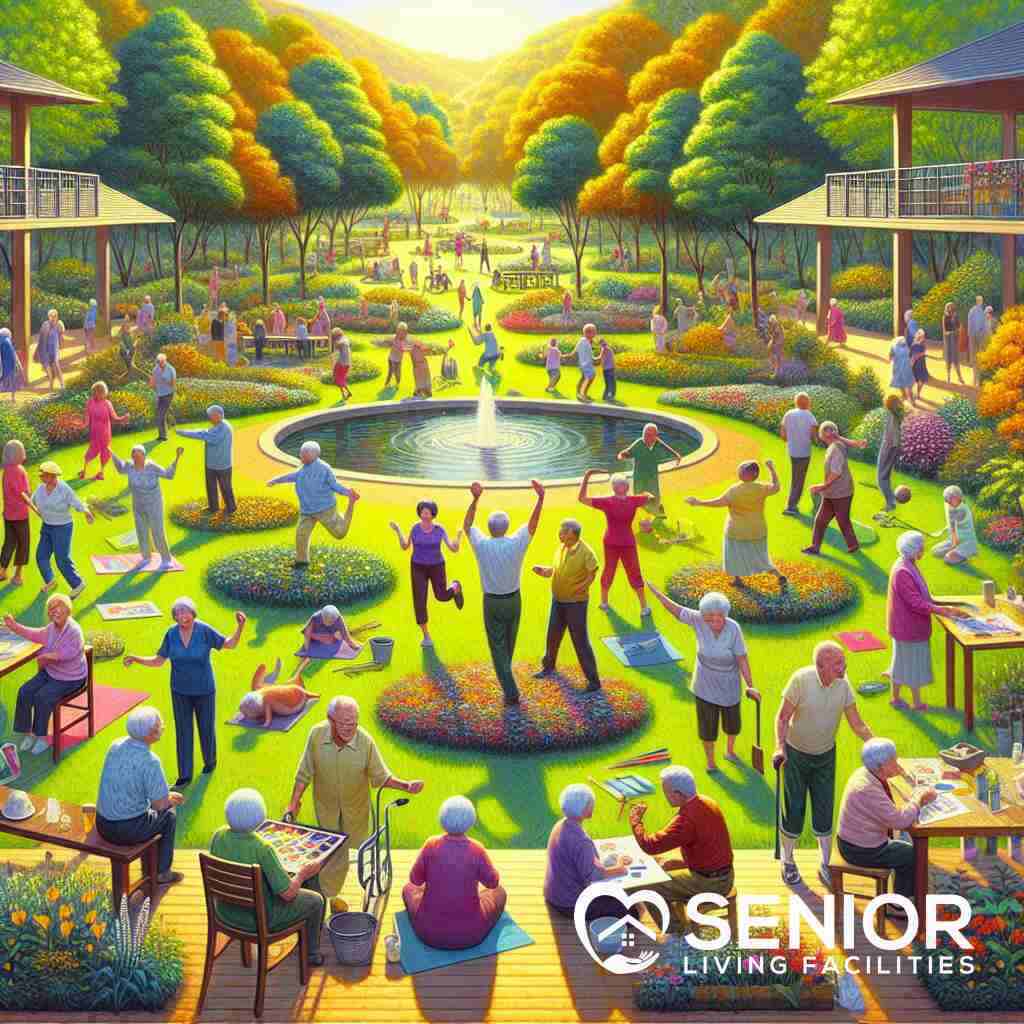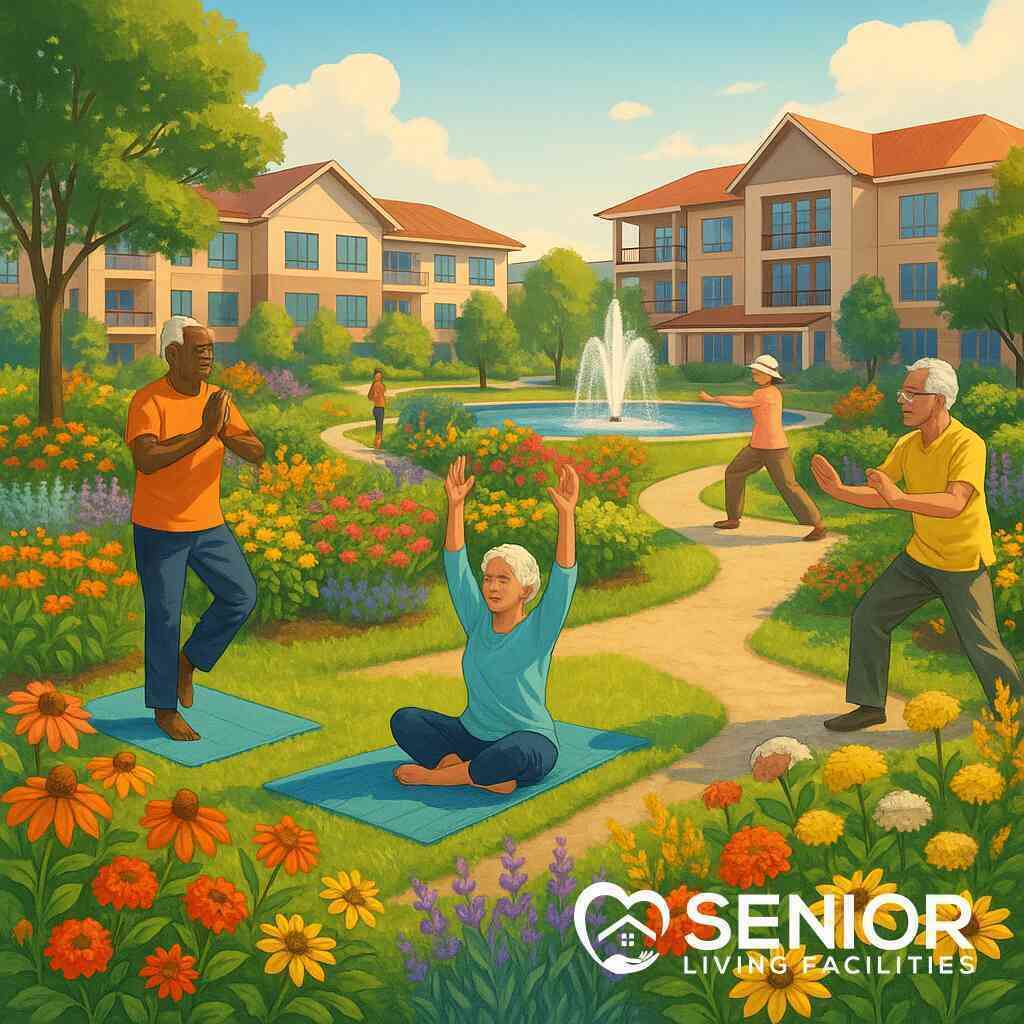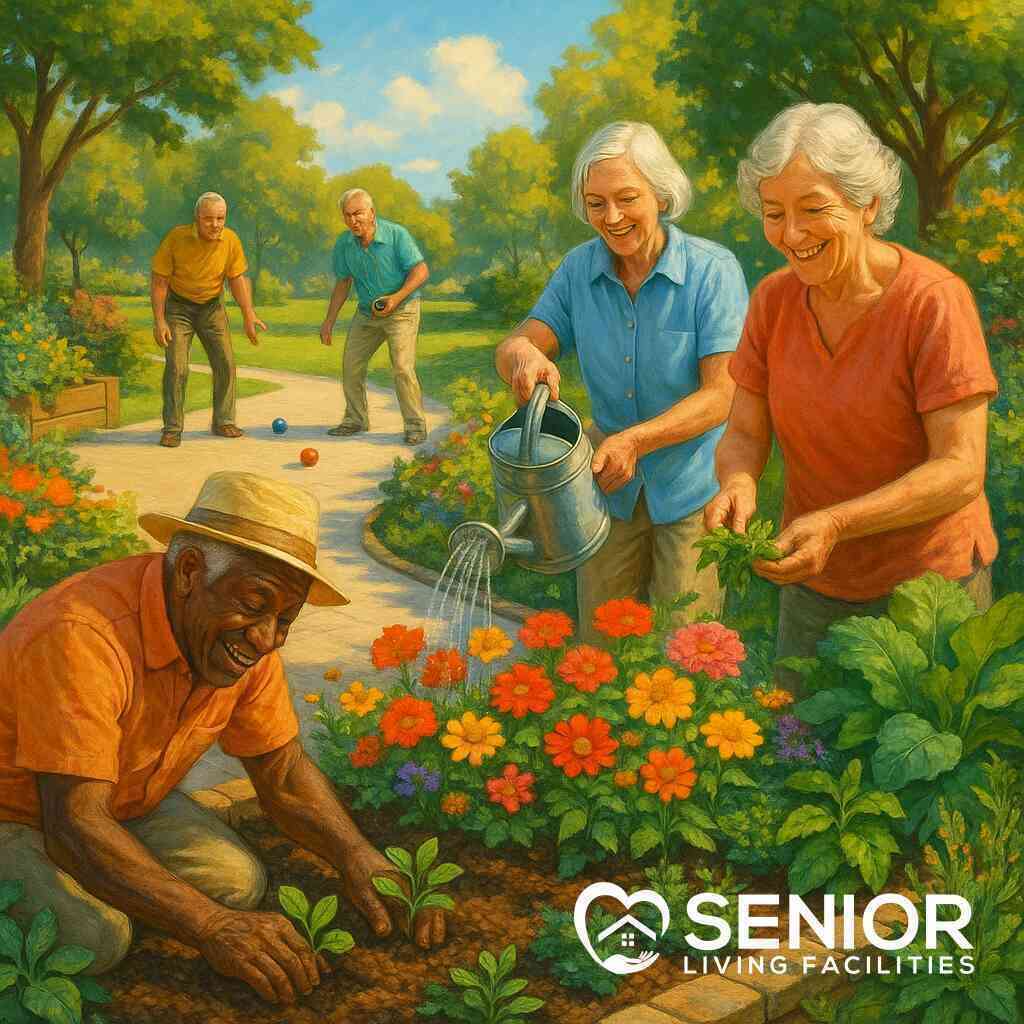
Planning a Move into a Senior Living Facility: Key Considerations
June 21, 2025
Embarking on the Senior Living Journey
Understanding Senior Housing Options
Embarking on the journey to find suitable senior housing can feel overwhelming given the myriad of choices available today. Understanding the kaleidoscope of senior housing options is crucial for making an informed decision. These options range from independent living to assisted living and long-term care facilities, each offering unique benefits tailored to different needs. Independent senior communities cater to those who seek a vibrant lifestyle with minimal assistance, while assisted living facilities offer more comprehensive care and support. It’s essential to assess personal needs, future plans, and lifestyle preferences to ensure the selected community aligns best with the residents’ long-term expectations.
Key Considerations for Seniors’ Transition
The transition to a senior living community marks a significant life change and requires careful planning. Several key considerations can guide this transition seamlessly. First, evaluating personal health needs and future health implications is paramount, as it influences the type of care facility one might opt for. Budget planning is another critical facet, as it ensures sustainable living without financial strain. Furthermore, location plays a vital role-proximity to family, climate preferences, and access to leisure and healthcare facilities must be considered. Visiting potential communities and interacting with current residents offers invaluable insights that aid in making an informed decision.
Importance of Early Planning
The importance of early planning for senior communities cannot be overstated. Starting the planning process early allows seniors and their families to explore a wide array of options without the urgency that last-minute decisions entail. Early planning also provides ample time to assess financial options comprehensively, including potential legal considerations and insurance coverage, which are crucial to prevent future financial burdens. Additionally, proactive discussions with family about future living plans and desires promote unity and understanding, ensuring all parties are aligned on the course of action. This foresight and preparation not only provide peace of mind but also create a smoother transition, enriching one’s experience in their new community.
Decoding the Senior Living Spectrum
Independent Living vs Assisted Living: Making the Right Choice
Navigating the labyrinth of senior housing requires clarity, especially when deciding between independent and assisted living. The independent senior living concept highlights communities where residents maintain autonomy within a community setting. These environments cater to active seniors who cherish independence but seek social connectivity and amenities designed for their age group. In contrast, assisted living facilities provide residents with personal care support, emphasizing healthcare services, aiding those who require assistance with daily activities like bathing or medication management. Understanding these differences is key. It aligns the decision with personal lifestyles and healthcare needs, ensuring seniors and their families make informed choices grounded in practicality and anticipation of future needs.
Assessing Long-term Care and Nursing Homes
For seniors requiring more comprehensive care, exploring long-term care options becomes necessary. Nursing homes offer extensive care, including 24-hour supervision, medical assistance, and rehabilitative therapy for chronic illness or disabilities. When navigating senior care choices, one must evaluate the extent of services that these facilities provide, which could range from short-term rehabilitation to long-term residential care. The decision process involves not only assessing the medical and personal care needs but also considering the emotional and social aspects of choosing a nursing home. Seniors and their families are encouraged to visit facilities, engage with staff, and discuss care plans to ensure alignment with expectations and care requirements. This comprehensive evaluation aids in selecting a facility that delivers nurturing, dignified, and patient-centric care.
Senior Apartment Rentals and Financial Planning
Understanding the financial landscape is critical when transitioning into senior apartment rentals. Budgeting effectively ensures that seniors can enjoy their lives without financial distress. When seeking guided senior apartment rentals, factors such as rental costs, community amenities, and additional services must be carefully considered. Beyond rent, financial planning should encompass long-term considerations, including healthcare costs and potential changes in levels of care. Proper budgeting ensures sustainability, allowing seniors to relish their lives with peace of mind, knowing that their living situations and financial resources are well-aligned.

Evaluating and Selecting Optimal Senior Communities
Amenities and Services: Beyond the Basics
When evaluating senior living facilities, it’s critical to consider the amenities and services provided. Beyond basic accommodation, an ideal senior community offers a plethora of amenities that enhance the overall quality of life. Look for facilities that provide recreational activities, fitness centers, and cultural events, which are essential for nurturing both physical health and mental well-being. Furthermore, consider dining options-communities with diverse and nutritious meal plans can significantly improve residents’ satisfaction. Additional services like housekeeping, transportation, and pet-friendly policies also play a vital role in ensuring comfort and convenience. By thoroughly exploring these features, potential residents can ascertain how well the community aligns with their lifestyle and personal preferences.
Personalized Care and Medical Considerations
In selecting the right senior living facility, personalized care emerges as a cornerstone of ensuring resident satisfaction and well-being. Facilities should offer tailored care plans that address the specific medical and personal needs of each resident. From medication management to assistance with day-to-day activities, comprehending the personalized senior care options available ensures that the chosen community can adequately support its residents. Examine how the community approaches emergency care and chronic condition management, including access to healthcare professionals and rehabilitative services. Individualized care fosters a supportive environment that respects each resident’s unique health requirements, ensuring a dignified and comfortable living experience.
Safety, Security, and Senior Residency Requirements
Safety and security are paramount when transitioning to a senior living facility. Investigate the community’s protocols regarding emergency preparedness and security measures to ensure peace of mind for residents and their families. Facilities should maintain stringent safety standards, including 24-hour surveillance, secure entry systems, and a comprehensive senior facilities safety and security policy. Additionally, it’s vital to understand the residency requirements, as these may vary across communities. This includes age restrictions, health assessments, and financial prerequisites, which must be clearly communicated and understood. A well-secured environment coupled with transparent policies assures families that their loved ones are in a safe and supportive setting.
Social Engagement in Senior Living
Social connectivity is a pivotal aspect of thriving in senior living communities. Facilities that facilitate engaging social activities in senior living enhance residents’ quality of life and reduce the risk of loneliness and isolation. Examine how communities foster social interactions, offering clubs, group outings, volunteer opportunities, and cultural events aimed at enriching residents’ lifestyles. A community that prioritizes social engagements not only supports emotional well-being but also fosters a vibrant and supportive environment where residents can form meaningful relationships. By prioritizing social activities as a significant aspect of community life, seniors have the opportunity to continue growing, learning, and interacting within their new home.
Navigating the Transition: From Home to Community
Adapting to Life in Senior Living Communities
Adapting to life in senior living communities requires a balance of emotional readiness and practical adjustments. Moving from the comfort of home to a senior living environment might initially feel daunting, yet it’s a transformative opportunity to enhance engagement and well-being. Choosing the right senior living in Arizona involves examining the amenities and lifestyle options that align with individual preferences. It’s crucial for seniors to embrace community life by actively participating in social activities and community events. This engagement fosters vibrant connections, transforming the new environment from simply a place to live into a thriving community. Practical steps, such as personalizing the new living space with familiar items, can help ease the transition and nurture a sense of belonging and comfort.
Emotional Adjustments and Family Involvement
The emotional journey during a transition to senior living can be profound, necessitating both self-care and family support. Understanding senior transition emotional adjustments helps individuals and families prepare for this significant life change. Open dialogues within families play a critical role in alleviating anxieties associated with the move. It’s beneficial for families to participate in community visits and review the amenities together, reinforcing a sense of shared decision-making. Emotional support through frequent visits and communication ensures seniors do not feel isolated during this period of adaptation. Providing continuous reassurance can alleviate apprehensions and promote a seamless transition to the new environment.
Managing Changes in Lifestyle and Independence
Transitioning from a family home to a senior living facility necessitates various adaptations for senior lifestyle changes, particularly in daily routines and independence. On one hand, seniors enjoy the freedom from daily chores like housekeeping and maintenance; on the other, they must adapt to new routines. It’s essential to maintain elements of personal independence by engaging in activities that nurture autonomy, such as managing personal schedules and pursuing hobbies. Exploring the community’s offerings of activities of daily living for seniors, such as fitness classes or educational workshops, can maintain a sense of independence and routine. Balancing personal needs with the community’s structure ensures a harmonious blend of independence and support, helping seniors thrive within their new living arrangements.
Thriving in Your New Home
Enhancing Quality of Life in Senior Communities
Enhancing the quality of life in senior communities is a primary focus for any well-rounded senior living facility. Such communities are designed to enrich residents’ lives through a diverse range of activities and services that cater to individual preferences and needs. The embrace of cultural, educational, and recreational activities is essential in promoting active lifestyles and mental wellness among seniors. These elements come together to offer a rich tapestry of experiences that actively engage residents, thus influencing their overall satisfaction and happiness.
Moreover, facilities prioritize the quality of life in senior communities by incorporating wellness programs that promote physical health and mental acuity. Programs like fitness classes, art workshops, and social events are commonly offered, ensuring that residents remain active and socially engaged. By fostering such an environment, senior living communities support a well-balanced lifestyle that champions both independence and social interaction.
The Role of Wellness and Health in Senior Living
Wellness and health play a pivotal role in senior living communities, as they directly impact the residents’ quality of life. Facilities emphasize a holistic approach to health, which includes physical, emotional, and mental well-being. Comprehensive health services are fundamental, ranging from on-site medical care to nutritional guidance and mental health support. This commitment ensures that residents have continuous access to essential healthcare resources, facilitating longevity and vitality.
Furthermore, such facilities are designed to accommodate a wide variety of health needs, which can be particularly beneficial for those who require closer medical supervision. By offering personalized care plans and regular health assessments, facilities ensure that residents’ health needs are meticulously managed. This focus on wellness not only extends life expectancy but also significantly enhances day-to-day living.
Fostering Community and Connection
Building a strong sense of community and connection is integral to thriving in senior living environments. A vibrant community life encourages residents to participate in communal activities, fostering friendships and a sense of belonging. Whether through planned social gatherings or spontaneous interactions, these relationships are essential for emotional and psychological well-being and combat loneliness and isolation.
The shared experiences in community settings provide a platform for residents to engage in meaningful interactions, which deeply enriches daily life. Facilities that prioritize transitioning from home to senior community ensure that new residents feel welcomed and supported, smoothing the transition and instilling a feeling of security and acceptance. By nurturing these connections, senior living communities facilitate an atmosphere where residents can flourish, continually growing and enjoying their new homes in the company of peers.

Concluding the Senior Living Transition
Reflecting on the Journey and Future Considerations
Reflecting on the journey into senior living entails recognizing the efforts, emotions, and decisions undertaken to find the perfect living environment. This journey invites seniors and their families to assess not only their immediate circumstances but also future considerations. While the initial move to a senior living facility may mark an emotional transition, it also represents a step towards enriched living with enhanced care and companionship. Seniors are encouraged to embrace each new experience with openness and curiosity while continually evaluating their changing needs. Retrospective reflection allows older adults to appreciate the benefits of their transition, motivating them to seek additional opportunities for growth and enrichment within their communities. When comparing options, such as decoding assisted living vs independent living, seniors often find insights that guide future choices, ensuring their evolving needs are met with precision and care.
Maintaining a Balanced and Fulfilling Lifestyle
To maintain a balanced and fulfilling lifestyle within senior living communities, it is imperative to integrate wellness practices, social interaction, and personal interests. Senior living facilities offer a plethora of opportunities to engage in wellness programs that cater to varied interests and promote physical health and mental well-being. Participation in social activities, such as communal gatherings or volunteer work, fosters a sense of belonging and community engagement. Additionally, embracing hobbies and exploring new skills enriches seniors’ lives, enhancing satisfaction and personal fulfillment. Facilities, by recognizing the diverse needs of their residents, help promote tailored activities and resources that create vibrant environments. As communities strive to provide these elements, seniors are encouraged to actively participate, ensuring a high quality of life that balances independence with community engagement, thereby enriching their overall living experience.
Frequently Asked Questions
Question: How can Senior Living Facilities assist in planning a move to a senior living facility?
Answer: Senior Living Facilities is committed to making your transition into a senior living community as smooth as possible. We offer comprehensive resources to help you navigate the plethora of senior housing options available. By assessing your specific needs and preferences, such as the level of care required, financial considerations, and location preferences, we can guide you to the right community. Our platform allows you to compare various senior living facilities to ensure that you make an informed decision that aligns with your lifestyle and health considerations.
Question: What are some key considerations when choosing the right senior community, and how does Senior Living Facilities help with this decision making?
Answer: Choosing the right senior community involves evaluating personal health needs, lifestyle preferences, and financial capabilities. At Senior Living Facilities, we provide an expansive database of senior communities, allowing you to explore a wide range of amenities, personalized care options, and safety features. We encourage families to visit facilities and engage with staff to ensure alignment with expectations. Our platform’s search and compare features ensure that you find a community that offers the best quality of life and aligns with your senior living transition goals.
Question: How are independent living and assisted living different, and how can Senior Living Facilities assist in this decision?
Answer: Independent living communities are ideal for seniors who seek autonomy and an active lifestyle with minimal assistance. They focus on social connectivity and amenities for older adults. In contrast, assisted living facilities provide additional personal care support, including assistance with daily activities and healthcare services. Senior Living Facilities offers detailed comparisons of these options, helping you understand the differences and choose a living arrangement that meets your specific health and lifestyle needs. Our resources ensure that your senior living decision-making process is well-informed and tailored to individual preferences.
Question: What should I look for in amenities and services when evaluating senior care facilities?
Answer: When evaluating senior care facilities, consider not only the basic accommodations but also the additional amenities and services that enhance daily living. Senior Living Facilities recommends looking for communities that offer recreational activities, fitness centers, and cultural events, as these contribute significantly to residents’ quality of life. Dining options, housekeeping, transportation, and pet-friendly policies are also important aspects to explore. Our website provides detailed information to help you assess how various facilities meet these factors, ensuring that the lifestyle offered aligns with your personal preferences and needs.
Question: In the context of the blog post Planning a Move into a Senior Living Facility: Key Considerations, how does early planning help in making the transition smoother?
Answer: Early planning is crucial in ensuring a seamless transition to a senior living community. As highlighted in the blog post Planning a Move into a Senior Living Facility: Key Considerations, beginning the planning process well in advance allows for extensive exploration of options without the pressure of last-minute decisions. This approach provides the opportunity to carefully evaluate financial options, such as budgeting and potential insurance coverage, preventing future financial burdens. At Senior Living Facilities, we advocate for early discussions with family and proactive planning to ensure that your senior living experience is well-planned, offers peace of mind, and aligns with long-term expectations.


